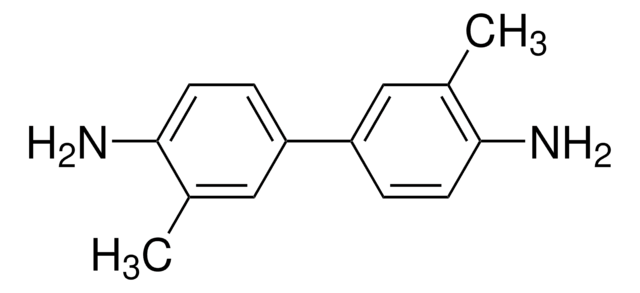1601827
USP
Residual Solvent Class 2 - Trichloroethylene
United States Pharmacopeia (USP) Reference Standard
Sinônimo(s):
Trichloroethylene solution, Trichloroethene
About This Item
Produtos recomendados
grau
pharmaceutical primary standard
Formulário
solution
fabricante/nome comercial
USP
aplicação(ões)
pharmaceutical (small molecule)
Formato
single component solution
cadeia de caracteres SMILES
ClC(=CCl)Cl
InChI
1S/C2HCl3/c3-1-2(4)5/h1H
chave InChI
XSTXAVWGXDQKEL-UHFFFAOYSA-N
Procurando produtos similares? Visita Guia de comparação de produtos
Categorias relacionadas
Descrição geral
Aplicação
Nota de análise
Outras notas
produto relacionado
Palavra indicadora
Danger
Frases de perigo
Declarações de precaução
Classificações de perigo
Aquatic Chronic 3 - Carc. 1B - Eye Irrit. 2 - Muta. 2 - Skin Irrit. 2 - Skin Sens. 1 - STOT SE 3
Órgãos-alvo
Central nervous system
Código de classe de armazenamento
6.1D - Non-combustible acute toxic Cat.3 / toxic hazardous materials or hazardous materials causing chronic effects
Classe de risco de água (WGK)
WGK 3
Ponto de fulgor (°F)
closed cup - does not flash
Ponto de fulgor (°C)
closed cup - does not flash
Escolha uma das versões mais recentes:
Certificados de análise (COA)
It looks like we've run into a problem, but you can still download Certificates of Analysis from our Documentos section.
Se precisar de ajuda, entre em contato Atendimento ao cliente
Já possui este produto?
Encontre a documentação dos produtos que você adquiriu recentemente na biblioteca de documentos.
Nossa equipe de cientistas tem experiência em todas as áreas de pesquisa, incluindo Life Sciences, ciência de materiais, síntese química, cromatografia, química analítica e muitas outras.
Entre em contato com a assistência técnica








